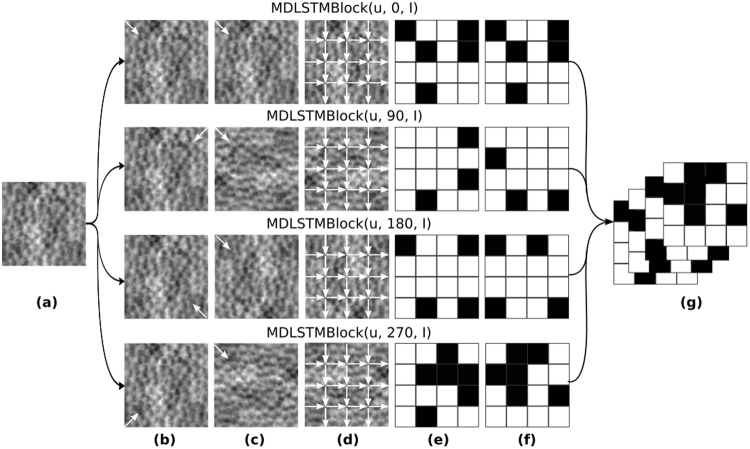Figure 4.
Each row shows an application of a different MDLSTM block. Each block processes the input pixels in a single direction, indicated by the arrow originating from the corner. To process pixels in four different orders, we rotate image I by a chosen multiple of 90 degrees. Pixels in the rotated image are then processed in a fixed order: from top to bottom, left to right. After rotating and processing the image the activations associated to each pixel are rotated back so that they are aligned in a feature image h, where features correspond to pixels . (a) Image I; (b) direction pixels will be processed in by the block. For example, in the third row, pixels from the unrotated image, will be processed bottom to top, right to left; (c) direction to process pixels in the rotated image to achieve an equivalent processing order as in (b,d) fixed processing order, top to bottom, left to right; (e) produced activations; (f) activations after applying the inverse rotation; (g) feature image h.

